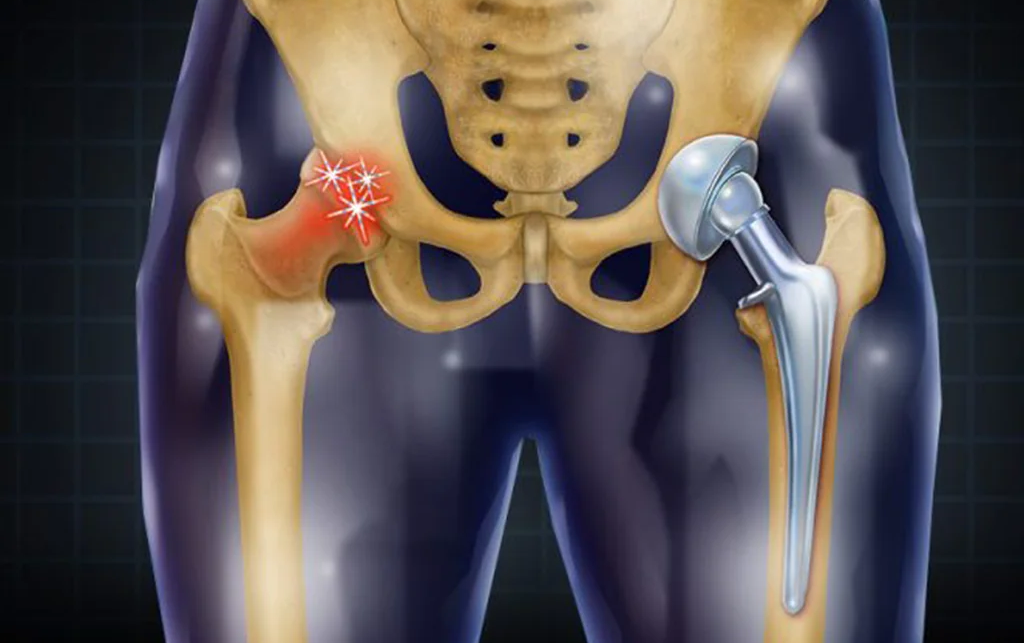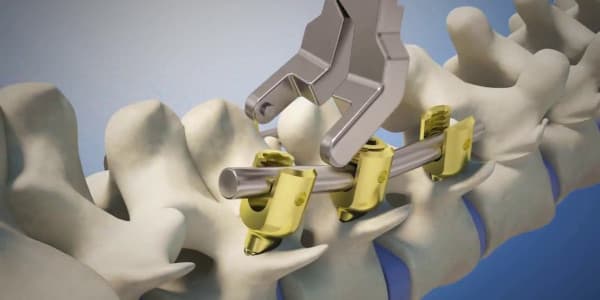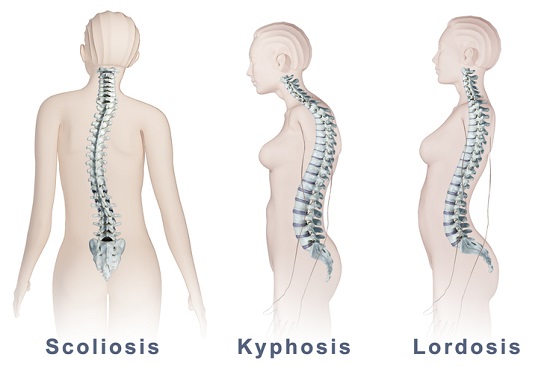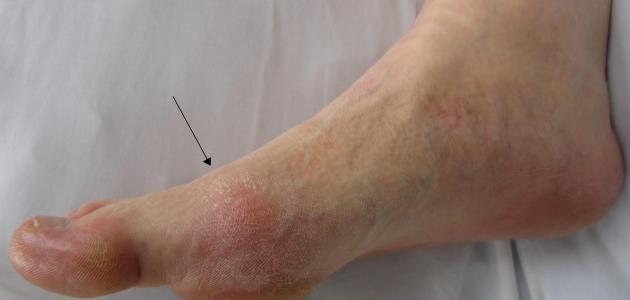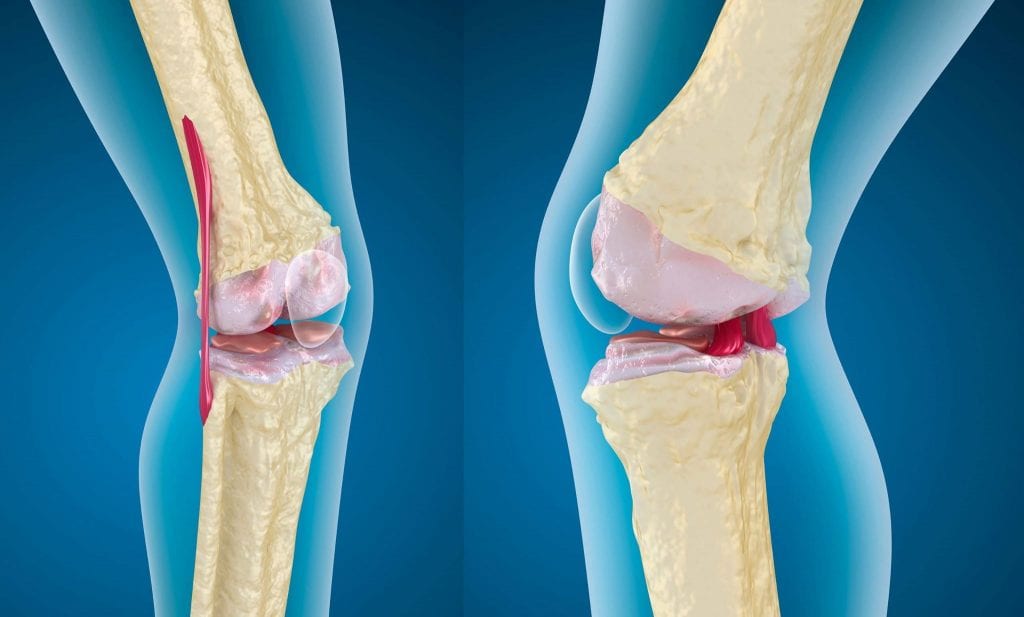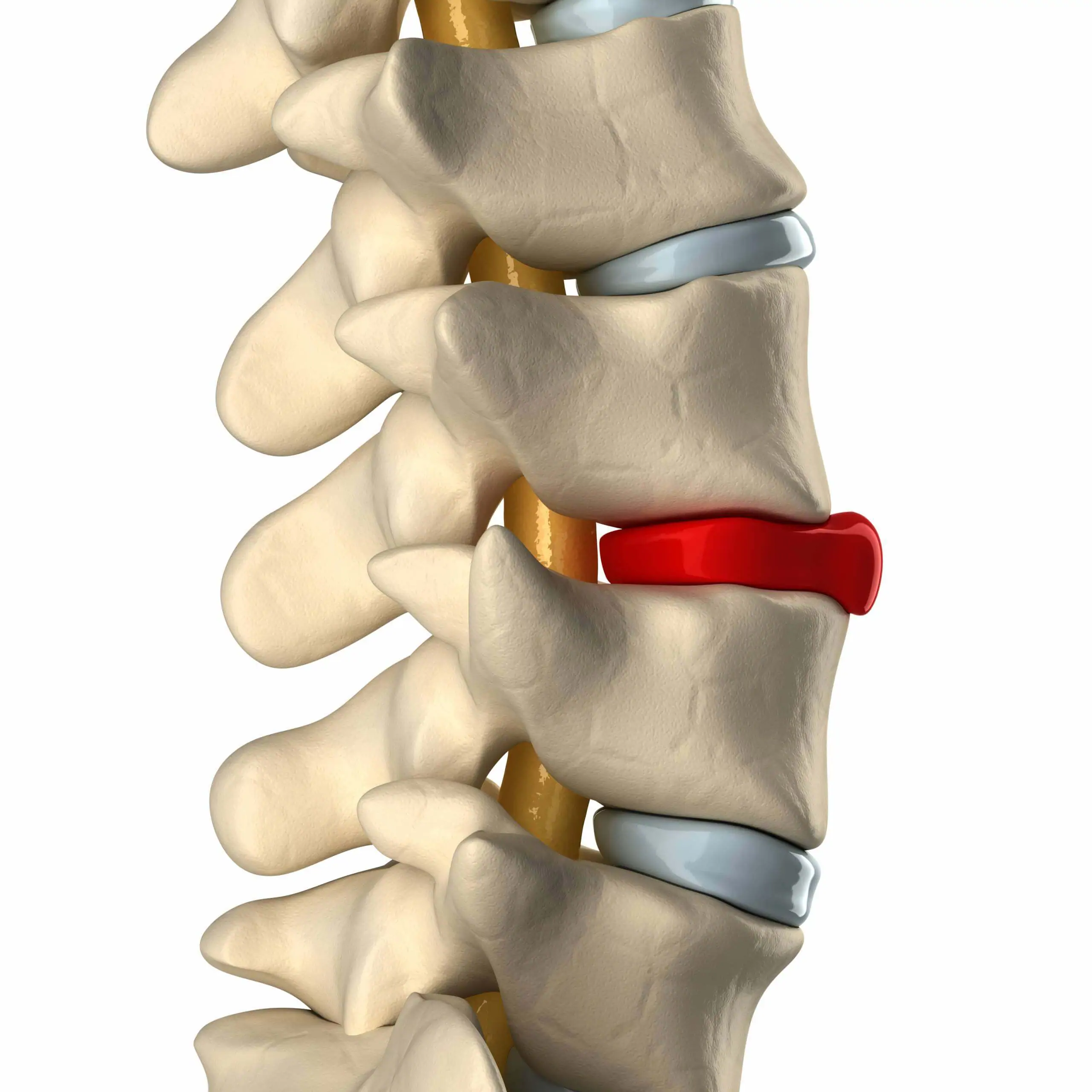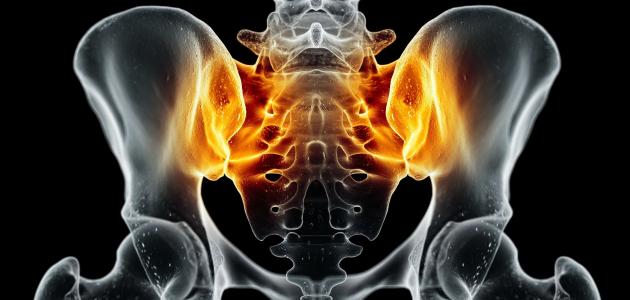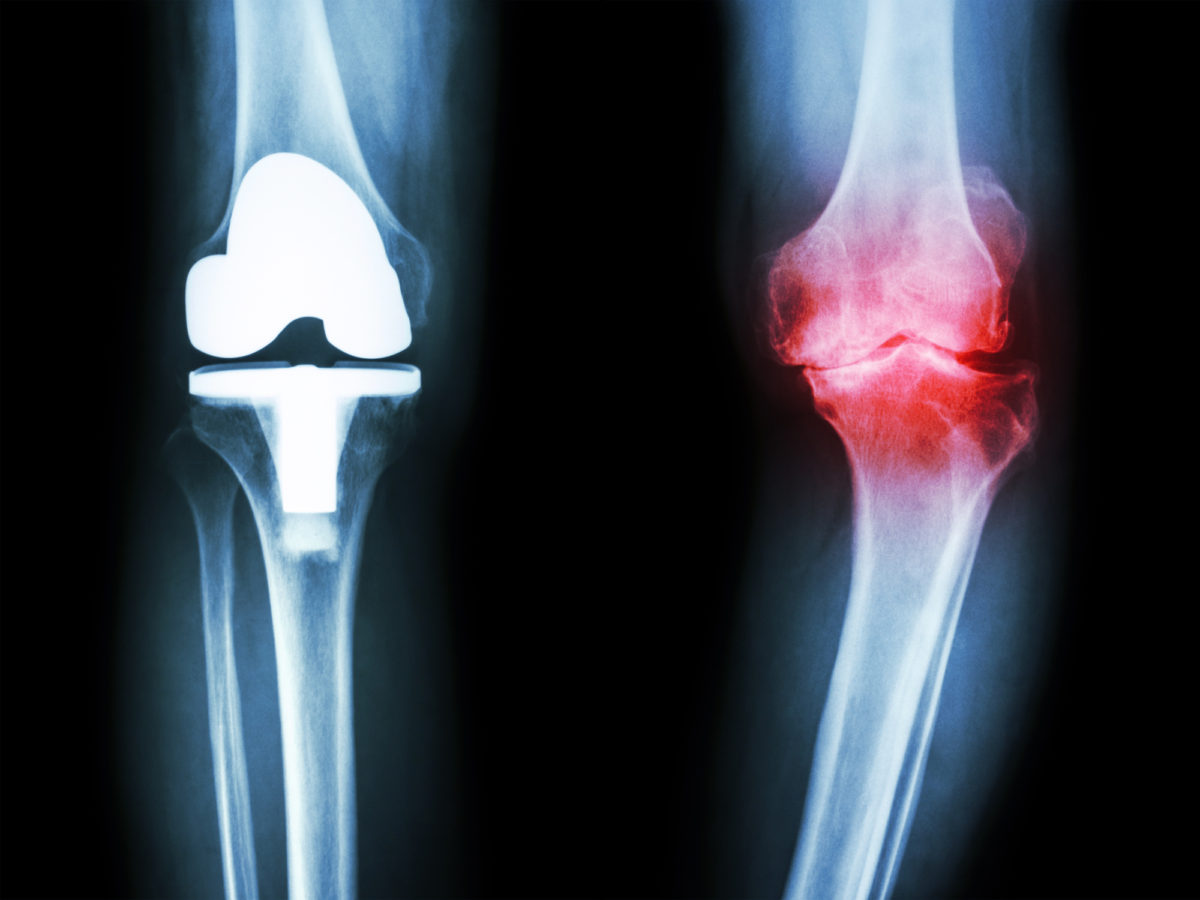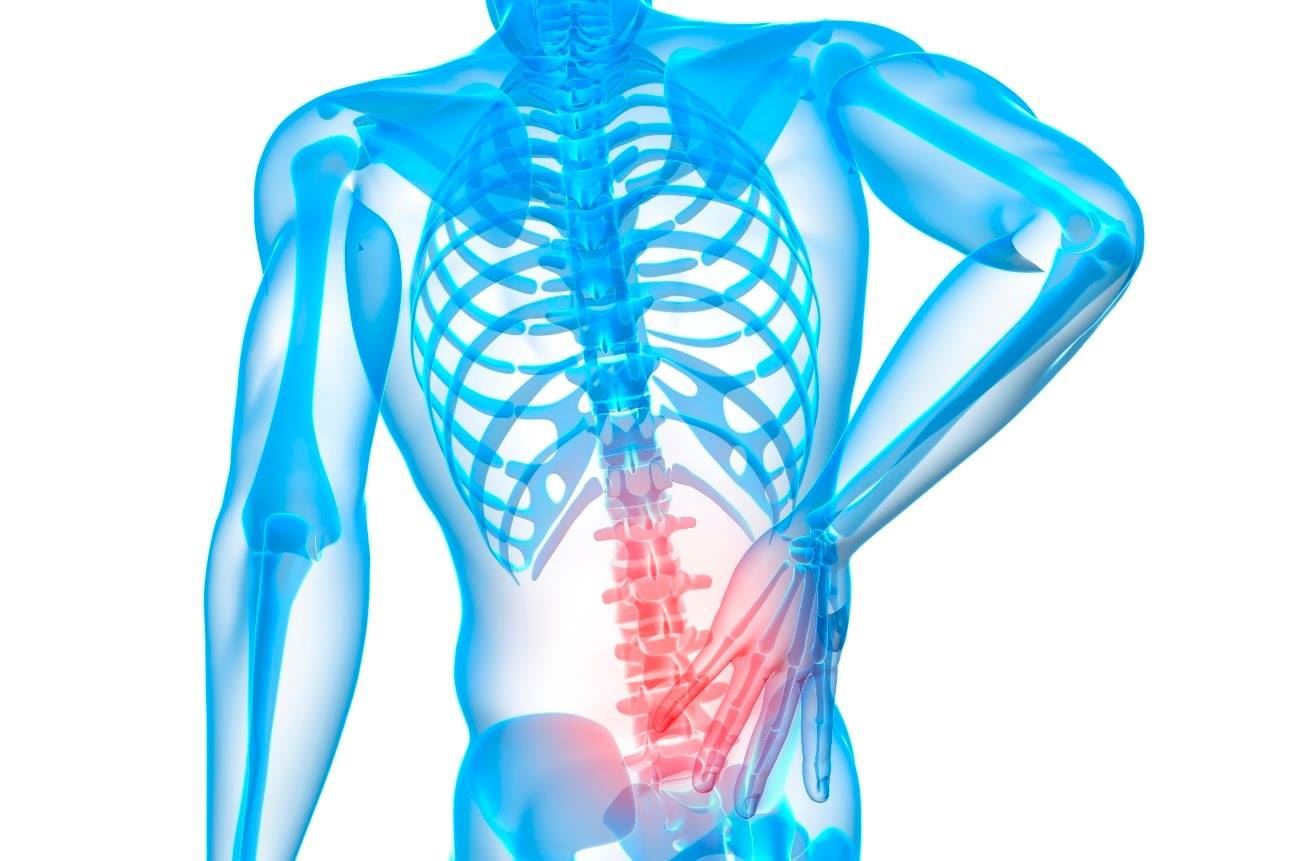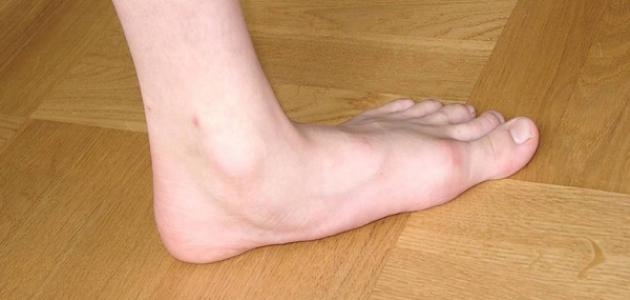!Learn more about arthroscopic disc surgery and its success rate with Dr. Amr Aml
Arthroscopic cartilage operations, Arthroscopic cartilage operations are among the modern surgical operations that have proven successful in treating cartilage diseases, without the need for open surgery, thanks to their ability to reach the disc herniation area without damaging the surrounding tissues. This operation has several advantages, such as getting rid of pain and rapid relapses, losing weight by moving after the operation, in addition to reducing the risks of exposure to other health problems, which we will get to know through this article.
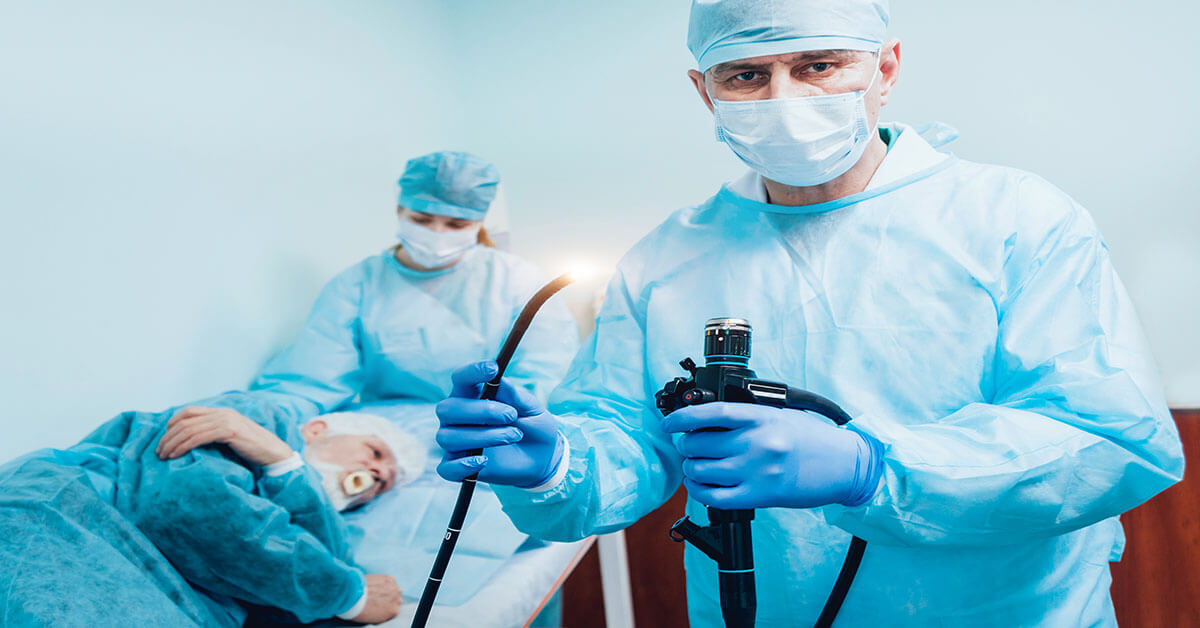
Arthroscopic cartilage operations
There are many causes of cartilage disease, and pain and stiffness in the joints are usually the first signs of cartilage problems. Fortunately, modern medicine provides solutions for these injury cases, including arthroscopic cartilage surgery. In this surgical procedure, a small arthroscope is inserted through a small incision in the joint, which helps reduce the rate of infection and increase the speed of healing. Arthroscopic cartilage surgery is one of the most effective and advanced techniques for treating cartilage diseases, including anterior cruciate ligament tears, cartilage damage, and disc slippage. Although arthroscopic cartilage surgery is a surgical procedure, it is considered a minimally invasive procedure that is performed smoothly and provides faster post-operative recovery.
Arthroscopic cartilage surgery relies on the use of local anesthesia for the affected joint, and the joint is moved using appropriate small tools. Radiography or ultraviolet imaging techniques can then be used, in addition to shaved cartilage and cartilage suction. Using arthroscopic surgery, doctors can work precisely on inflamed areas in the cartilage and avoid the negative impact of traditional surgery, which required major surgical procedures and wounds that take a long time to heal.
Since arthroscopic cartilage surgery is minimally invasive, this helps reduce overall treatment and recovery time, making it a common solution for cases of cartilage tears and other diseases related to this part of the body. Dr. Amr Aml was the first to use arthroscopic cartilage surgery in our country, and he has succeeded in performing hundreds of these operations. The operation always involves meticulous surgical intervention that relies on the surgeon’s expertise and ideal tools that ensure faster patient recovery and better results.
Get ready for the arthroscopic cartilage surgery experience with Dr. Amr Aml, where accuracy meets expertise.
Symptoms of a torn meniscus that require arthroscopic knee surgery
A torn meniscus can occur from severely twisting the knee in an unnatural way. Arthroscopic surgery may be required. People of all ages can be affected by this condition, but it most often occurs in those who over-exercise or have previous knee damage. Here are some symptoms to watch out for so the doctor can properly diagnose the condition:
- Sudden knee pain: Severe sudden pain is one of the main symptoms of a torn meniscus. The patient may feel sharp pain when performing daily activities or bearing weight. The pain is worse with lower body exercises. They may also feel pain when sitting for long periods or at night for unknown reasons.
- Knee swelling: When a torn meniscus occurs, it can cause obvious knee swelling. This happens as fluid leaks into the surrounding knee spaces. Swelling is accompanied by feelings of heat, tightness, and pain.
- Feeling of slipping: Some people feel their knee slipping or giving out when performing daily activities. Patients may feel this even when walking normally. The slipping feeling is related to poor meniscus function and is not comfortable.
- Loss of motion and stability: Loss of normal motion and stability is a common symptom of a torn meniscus. The patient may feel unable to move normally or perform certain activities due to knee slipping or sharp pain.
- Knee sounds: A “crunching” or “cracking” sound inside the knee may be heard with a torn meniscus. The patient feels and hears this sound. Although similar to other indicators, hearing this sound persistently indicates a likely torn meniscus.
In summary, a complete tear of the meniscus requires arthroscopic surgery to repair the damaged cartilage and restore balance to the joint. It’s important not to ignore any of the above symptoms, as delayed diagnosis can cause permanent knee damage.
Dr. Amr Aml: A name that means excellence in performing the highest quality arthroscopic disc surgeries.
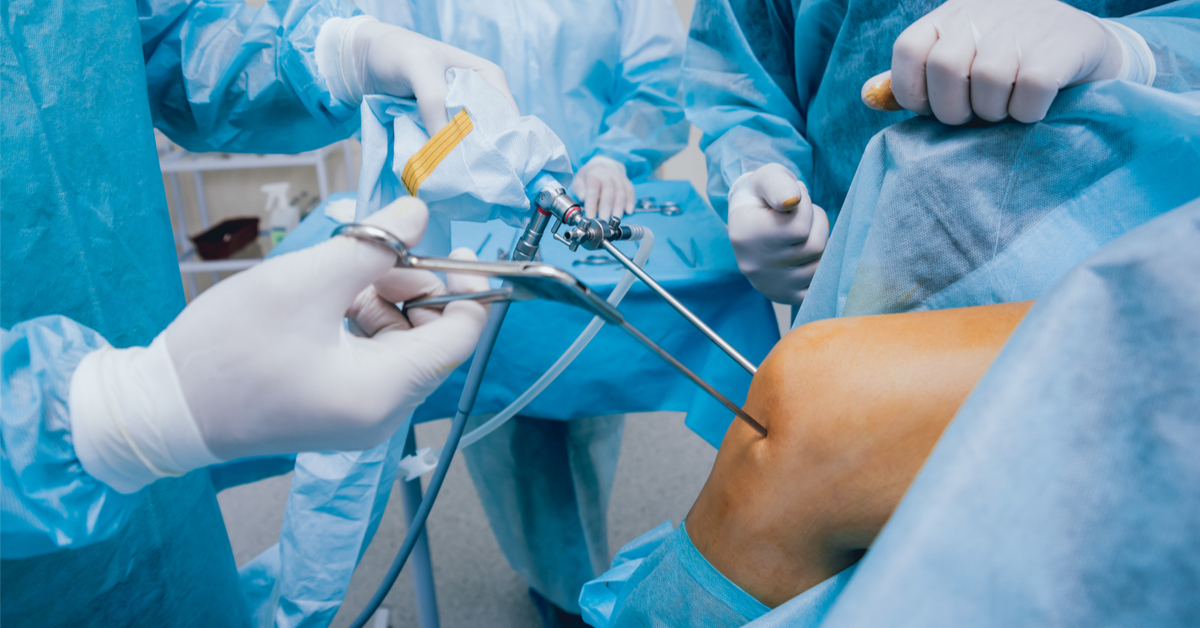
How arthroscopic cartilage surgery is performed
Have you suffered from knee pain and been diagnosed with cartilage slippage? You may need to undergo arthroscopic cartilage surgery. In this article, we will explain the medical details about the procedure and how it is performed in an easy and understandable way.
- Causes of cartilage slippage in the knee: Excessive movements or sports injuries, and cartilage slippage in the knee can also occur due to age, as the cartilage naturally regenerates after a period of time.
- Preparing for surgery: You must have complete blood tests and X-ray images before surgery to determine the level of injury and blood thinning. If you are taking any special medications, you should stop taking them before surgery.
- Tools used in surgery: The robot uses small tubes to provide high quality images in addition to touch screens where the surgical process can be seen.
- The surgery: The surgeon makes a small incision in the knee to allow the insertion of a thin tube and move it through your knee to reach the cartilage. The precision camera is inserted into the knee along with special tools to remove the compressed cartilage piece on the nerve and open closed cavities due to injury. They are then improved using stitches and screws.
- After the surgery: It is important to do physical exercises and take the medicines and preparations prescribed by the surgeon after surgery to improve performance and reduce pain and swelling. It is advisable to have regular physiotherapy sessions to improve muscle strength and flexibility in the injured knee.
We hope this article helps you better understand the surgery and make the best decision for your health. Remember, you should talk to your doctor before making any decision about surgery to determine if it is suitable for your condition or not.
Advanced techniques and meticulous care in arthroscopic cartilage operations with Dr. Amr Aml.
Potential Benefits of Arthroscopic Cartilage Repair
Arthroscopic cartilage repair is a surgical procedure used to treat problems related to joint cartilage damage. The arthroscope allows the surgeon to enter the body’s joints through a small incision the size of a needle hole. This makes the procedure more precise, less invasive to surrounding tissues, and offers several benefits:
- Pain Relief: Cartilage damage can cause pain, swelling. Arthroscopic surgery can remove damaged cartilage and stimulate new cartilage growth, leading to pain relief.
- Fast Recovery: Arthroscopic repair provides a shorter recovery period and faster post-surgery recuperation since large skin incisions are not required, reducing pain and recovery time.
- Avoid Open Surgery: Arthroscopy uses specialized tools and techniques to access and address the affected joint. Many cases requiring open surgery can be successfully treated with arthroscopy.
- Reduced Surgical Risks: While risks exist with arthroscopic surgery, experts suggest these are lower than open surgery risks. Patients can avoid some risks associated with open surgical procedures.
- Quick Diagnosis: Arthroscopy can quickly and accurately diagnose cartilage damage, allowing the surgeon to clearly view the joint and determine how to repair the damage.
- Improved Mobility: Arthroscopic repair provides room for knee movement and avoids future tears and damage.
In summary, the benefits of arthroscopic cartilage repair are significant. If you have joint cartilage issues, this procedure may be the ideal solution for your condition. Don’t hesitate to find the best treatment for your problem by talking to your doctor.
With Dr. Amr Aml, enjoy the best arthroscopic surgery results and shortest recovery time.

How Long Does Knee Cartilage Surgery Take?
Knee cartilage surgery using arthroscopy is considered a safe and effective procedure to treat damaged cartilage injuries. It is performed using an arthroscope instead of open surgery. During the procedure, the detached cartilage fragment is shattered into small pieces using ultraviolet light. The duration of the surgery depends on the size of the injury and the surgeon’s ability to easily access the detached area, ranging from 30 to 60 minutes.
After surgery, the patient needs to follow the medical instructions given by the doctor, like rest and avoiding strenuous exercise for a certain period. The patient should consult the doctor if any unusual symptoms occur after the surgery. Although knee cartilage surgery using arthroscopy poses no risk to the patient, the condition of the cartilage damage should be assessed to determine its responsiveness to arthroscopic surgery and make the right treatment decision.
Choose safety and efficiency in arthroscopic cartilage surgery with Dr. Amr Aml.
Success Rate of Knee Cartilage Surgery
Deciding to undergo arthroscopic knee cartilage surgery is a critical step for a patient, and many wonder about its success rate. According to medical research, the success rate of knee cartilage surgery is around 80%, including surgical success and lack of complications. Studies have also shown that the success rate varies depending on influencing factors like the patient’s condition and type of back cartilage problem, in addition to the surgeon’s expertise and competence.
In general, surgery for cartilage detachment has proven highly successful in recent years, with a 90% success rate when performed arthroscopically, and up to 95% in certain cases. This surgery has several advantages like not requiring a large surgical incision and ability to leave the hospital the same day.
Additionally, knee cartilage surgery using arthroscopy requires advanced surgical skills from the treating physician, as it is performed using small tools and narrow arthroscopes that help access and realign the damaged part of the back cartilage. Research shows that determining the appropriate condition for arthroscopic surgery, along with choosing the right treating physician, are key factors affecting the success rate.
In conclusion, arthroscopic knee cartilage surgery is considered a procedure with a high success rate. Patients can avoid complications and improve quality of life by having this surgery successfully performed. It is important to consult with the treating physician and prepare well before undergoing this surgery to ensure a successful and healthy outcome.
Dr. Amr Aml, your expertise for outstanding success in arthroscopic knee cartilage surgery.
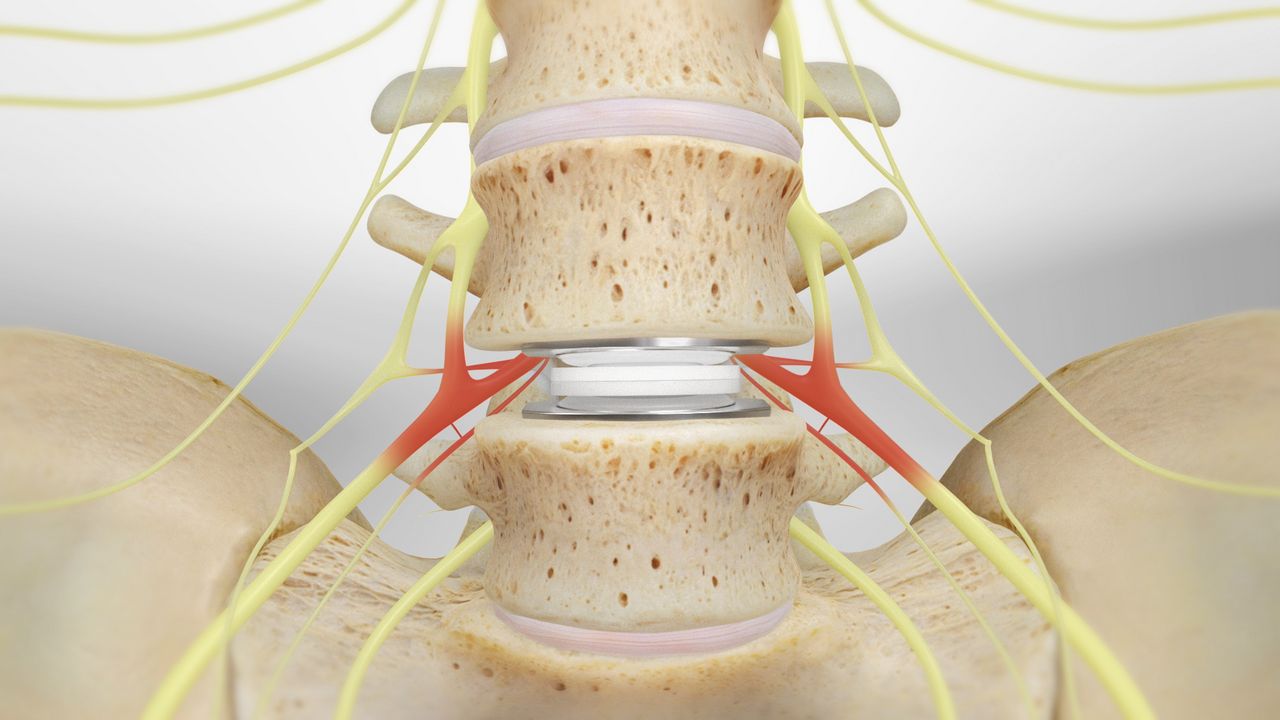
How long does it take to recover from a disc herniation surgery?
Many people suffer from lumbar disc herniation, where the disc slips between the vertebrae causing severe pain. Some patients’ conditions reach the point of needing surgery, so what is the recovery time from a disc herniation surgery?
The recovery time from a disc herniation surgery varies between patients depending on their health condition and the type of surgery. Simple surgeries may take 4-6 weeks, after which the patient is gradually allowed to return to normal activity. More complex surgeries may take anywhere from 6 months to a full year for complete healing. During the recovery period, care and caution must be taken to avoid strenuous activities like bending, heavy lifting, driving a car for at least 4 weeks. Following the surgeon’s instructions regarding physical therapy after surgery also plays an important role in speeding up the healing process.
The patient must keep in mind that surgical procedures are not without risks, and do not guarantee 100% complete healing. There may still be mild to moderate residual pain. Therefore, it is important to follow the treating physician’s advice in the post-operative period, gradually return to normal life, and practice physical exercises after complete recovery. The cost of surgery may range from 30,000 to 80,000 Egyptian pounds, affected by various factors like type of surgery, follow up visit fees, etc.
Enjoy a pain-free life thanks to Dr. Amr Aml’s expertise in arthroscopic disc surgeries.
Complications of arthroscopic disc surgery
Many people suffer from back pain caused by disc herniation. To solve this problem, arthroscopic disc surgery is used. However, some complications may arise after this surgical procedure. Today we will look at some of these complications and ways to prevent them.
- Bleeding: One of the most common complications that can occur after arthroscopic disc surgery is bleeding. To protect the patient from this complication, care should be taken to monitor blood levels in the body during surgery. If bleeding increases, necessary measures should be taken to control it.
- Infection: The surgical wounds from arthroscopic disc surgery may become infected, leading to longer healing times and requiring antibiotics. To avoid infection, sterile surgical tools should be used during the procedure.
- Nerve damage: Nerve damage is a rare complication that can occur during arthroscopic disc surgery. It happens when the nerves surrounding the disc are damaged during surgery. To avoid this complication, the surgeon must take care and follow proper precautions to protect the nerves during the procedure.
- Re-herniation: Disc re-herniation is a complication that can occur after arthroscopic disc surgery. It results from improper stabilization of the affected area. The patient must follow post-operative rehabilitation instructions to ensure proper movement and reduce risk of re-herniation.
- Pain: Some patients experience pain in the treated disc following arthroscopic disc surgery. This pain may persist for a long time. To reduce pain severity, prescribed pain medication can be taken. Applying ice to the affected area can also help alleviate the pain.
- Healing time: Arthroscopic disc surgery is a safe and effective procedure. Patients can return to work a few days after surgery. However, healing time varies from person to person, and can be affected by factors like age, general health, size of herniation, etc.
In conclusion, arthroscopic disc surgery is not without complications and risks, but it is considered a safe and effective treatment for this problem. Therefore, patients should follow proper instructions to achieve optimal results and minimize the risk of complications.
Dr. Amr Aml: A pioneer in providing advanced treatment solutions for arthroscopic disc surgeries.
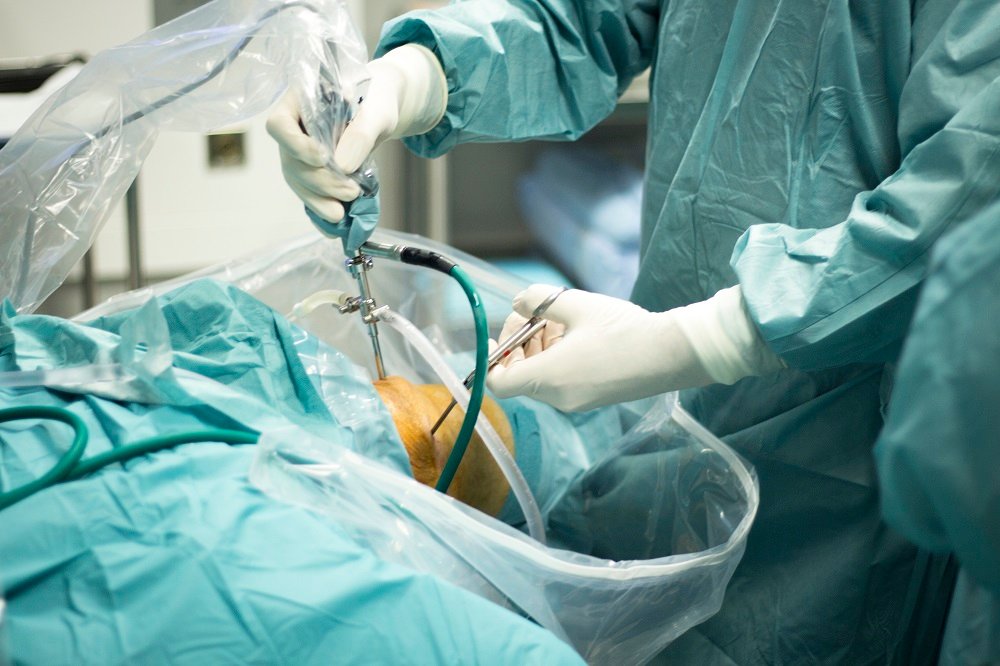
Cost of arthroscopic disc herniation surgery
Arthroscopic disc herniation surgery is a modern technique used to treat this common condition. A thin tube is inserted through the skin to minimize tissue and muscle damage, and remove the disc more effectively. The cost of this surgery in Egypt ranges from 50,000 to 100,000 Egyptian pounds. This covers the surgeon’s fees, medical examinations, hospital stay, etc. Patients with disc herniations often suffer from numbness or tingling due to disc pressure on the nerves, causing muscle weakness and inability to move normally.
The cost of the surgery varies from country to country. The average cost is around $13,000 for patients without complications, or $19,000 with complications. The cost depends on the patient’s condition severity, techniques and materials used. Each technique varies based on the equipment, hospital, nursing care, etc. Patients should consult about the cost of surgery before undergoing it, and ensure it will be performed by an experienced, skilled surgeon in this field.
Best orthopedic surgeons for arthroscopic disc surgery
Dr. Amr Aml is one of the best orthopedic surgeons in Egypt, especially in the field of arthroscopic disc surgery. Dr. Amr Aml is highly experienced in orthopedics. He graduated from Ain Shams University Medical School with honors. He worked at Ain Shams University Hospitals for 3 years as an assistant lecturer, and 5 years as an assistant professor. He currently holds the position of Consultant Orthopedic Surgeon at Ain Shams University.
With his extensive experience and deep knowledge of orthopedic and arthroscopic techniques, Dr. Amr Aml provides specialized and tailored treatment for all knee stiffness conditions and various joint diseases, including arthroscopic disc surgeries. These are considered the best modern methods to get rid of disc problems affecting patients’ movement and daily life. Therefore, people suffering from various bone and joint diseases or disc issues should consult Dr. Amr Aml to get the best treatment results and recovery.

